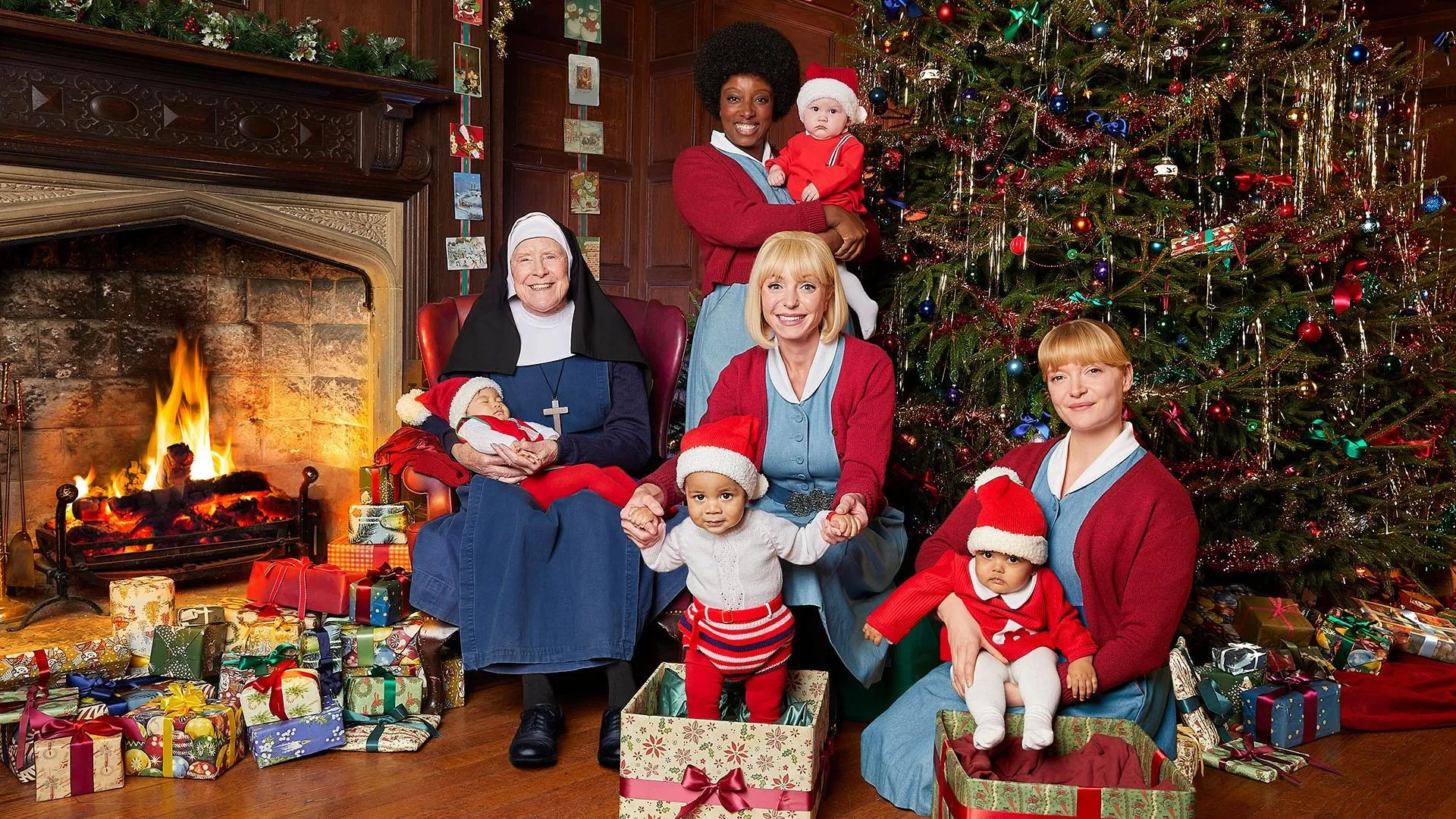British Christmas Traditions that Might Surprise You
Many Christmas traditions look similar as they’re practiced around the world but leave it to the Brits to have a few customs all their own. MASTERPIECE fans have seen many a Christmas scene play out on our shows over the years. Now, here’s a guide to some singular holiday traditions that make a UK Christmas a unique experience—from bad jokes read at dinner to slapstick fairytales onstage and unique holiday slang. Enjoy and happy holidays!
Want more comfort and joy this winter? Don’t miss All Creatures Great and Small Season 4 premiering Sunday, Jan. 7, 9/8c only on MASTERPIECE on PBS.
Special Christmas TV Episodes
The “Christmas Special” is an extra episode tacked merrily onto a TV series to air during the British December holidays. The special doesn’t have to be relevant to Christmas but usually is. Even the program Doctor Who, which returned in 2005, airs its own cosmic Christmas special pretty much every year. And we’ve seen aspects of the holiday celebrated on MASTERPIECE shows from All Creatures Great and Small to Grantchester.
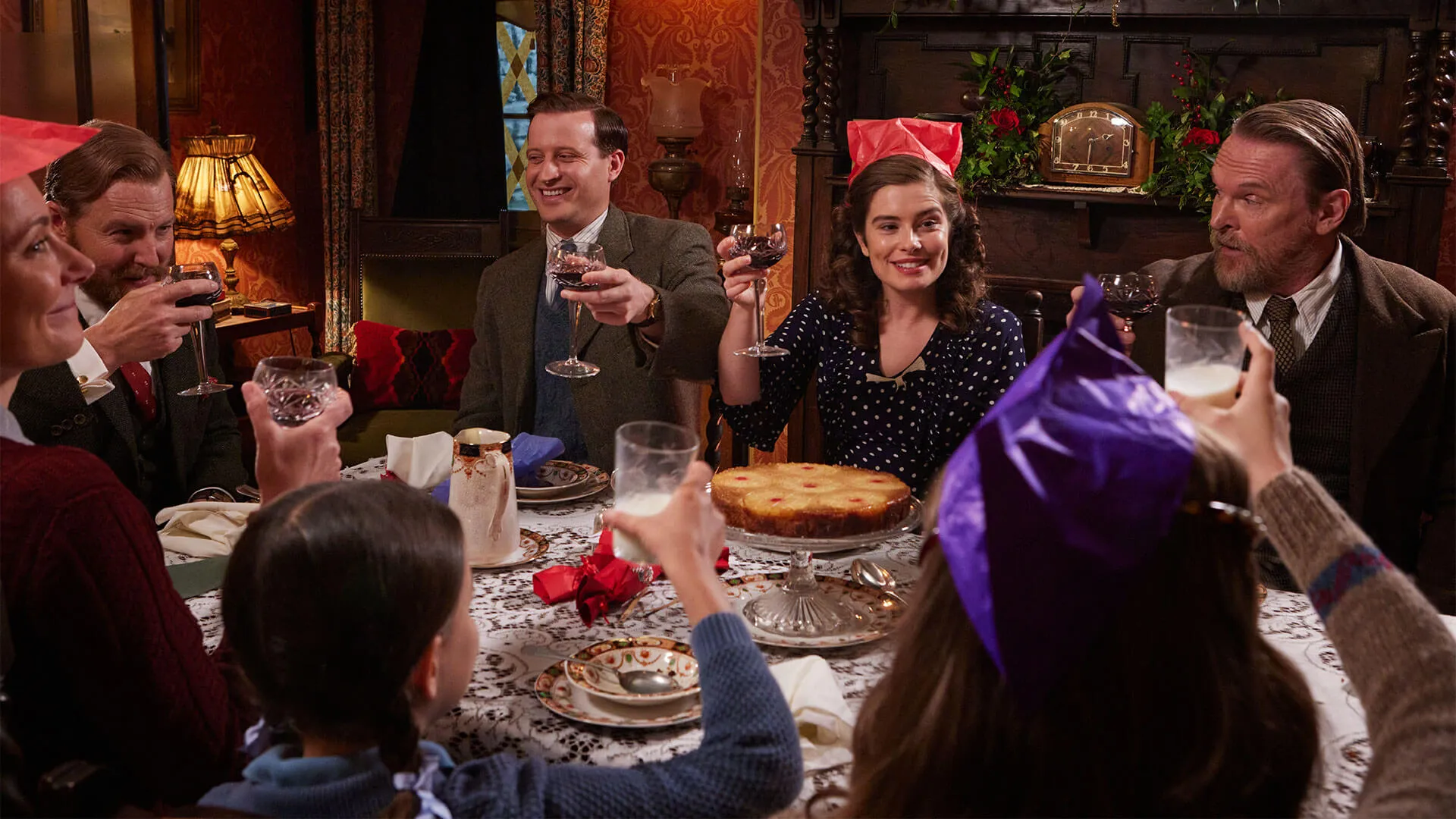
All Creatures Great and Small’s Season 3 Christmas special Holiday Terminology
Some British holiday jargon is just different enough to give pause to those outside the UK. Is it news to you that Brits say, “Happy Christmas” versus “Merry Christmas”? Are you aware that it’s often “Father Christmas” not “Santa Claus” across the pond? Well, we wager you’ve not heard the shorthand slang of “Chrimbo” or “Crimble” for Christmas, which it's hard to believe originated in the 1920s! The Beatles notably taped a special “Happy Crimble” greeting for fan club members in 1963, so the terms must be cool.
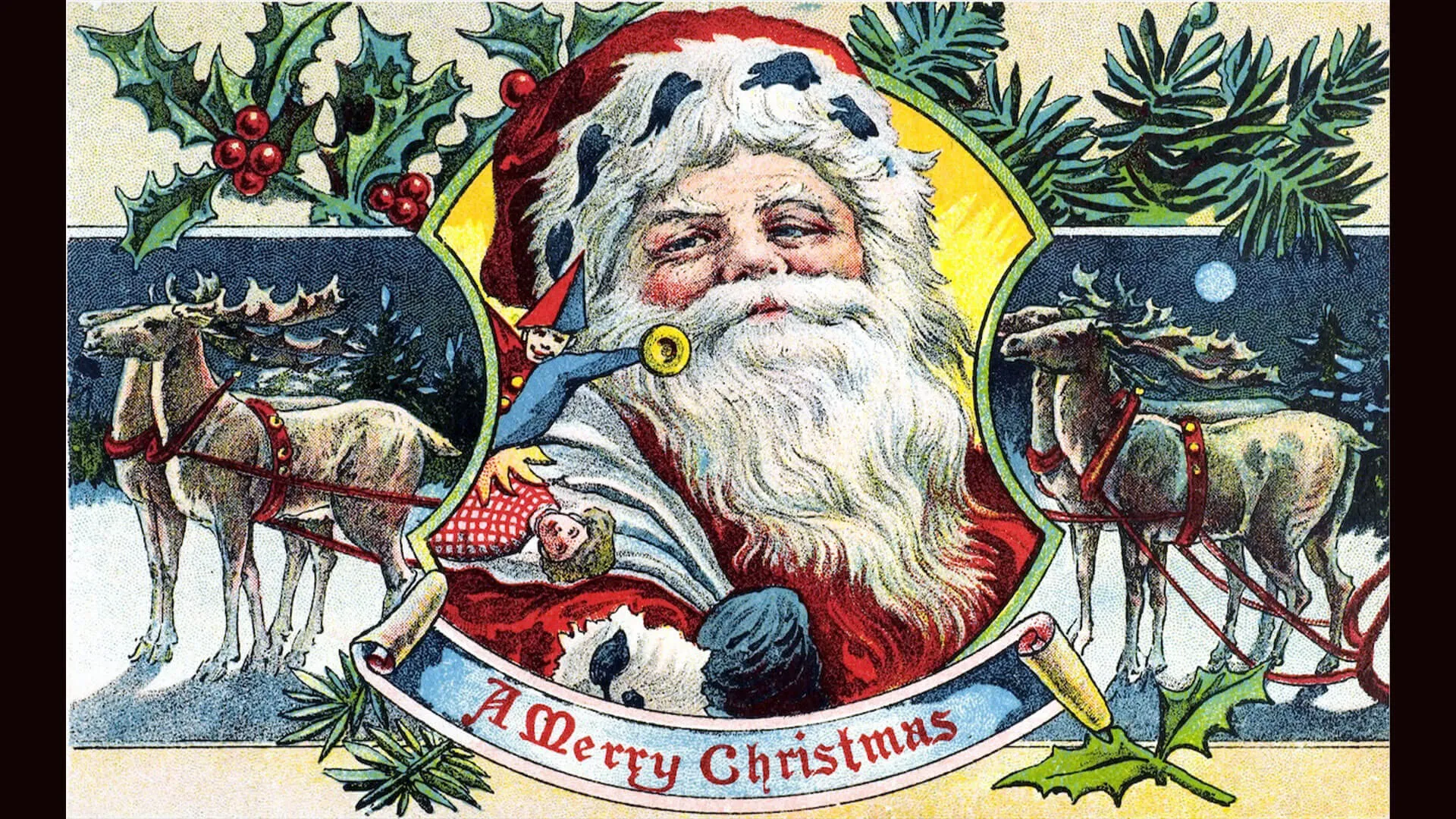
Father Christmas on a 19th century postcard Pantomime Shows
A British pantomime or “panto” is, in fact, not mime but rather campy musical comedy for all ages. (Forget the Nutcracker.) Most English theaters will offer a December panto, often based on a famous fairytale, and there is plenty of slapstick humor, cross dressing, and topical innuendo. “Panto dames” are central to the tradition; they’re usually played by an older male actor embodying an older female character in an amplification of femininity. Boisterous audience participation is part of the holiday merrymaking, ranging from sing-alongs to the loud booing of villainous characters.
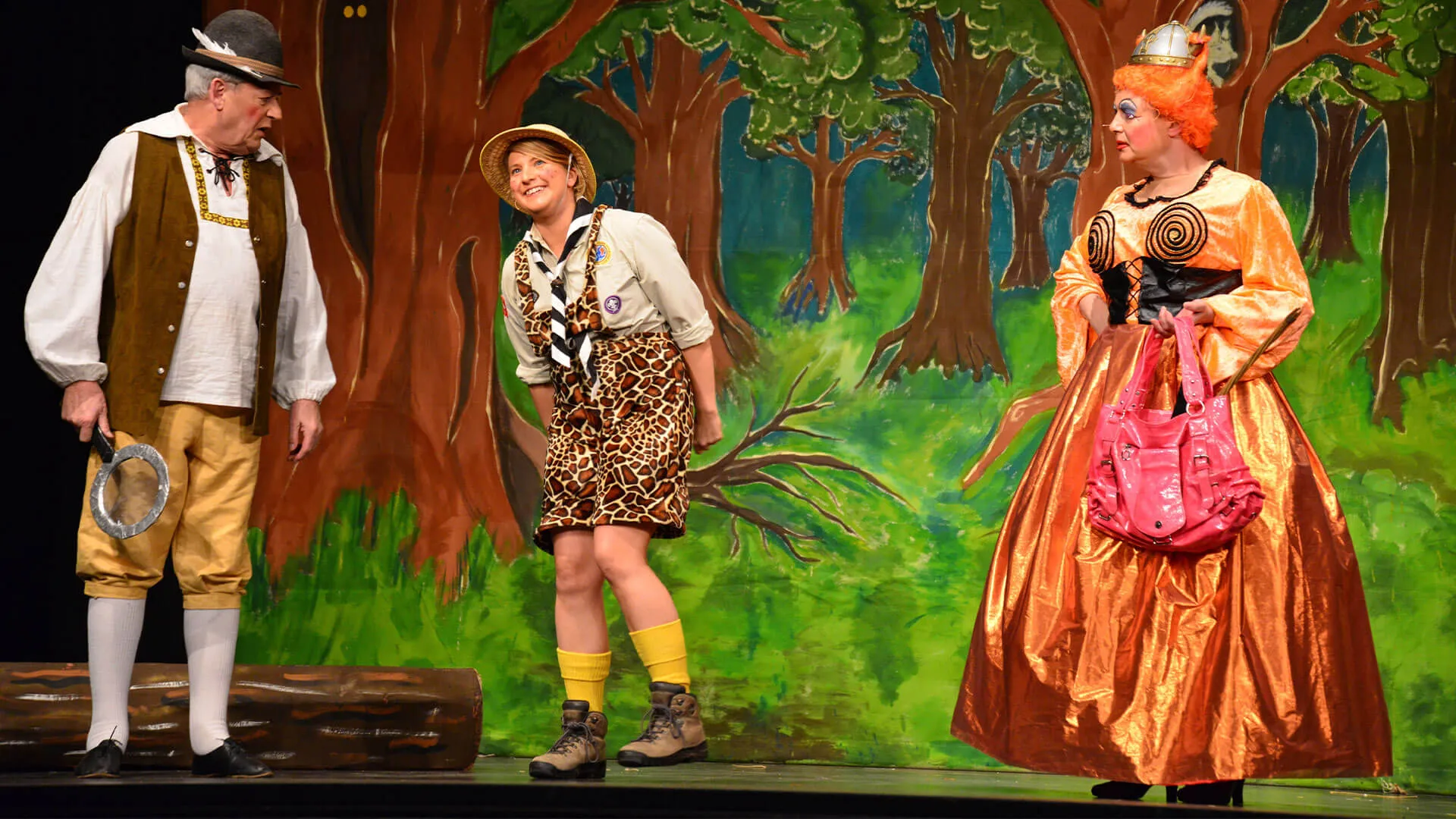
'Hansel & Gretel' amateur pantomime production, Hounslow, Greater London, England Festive Jumpers
Ridiculous wooly pullovers featuring snowmen, reindeer, pom-poms, or even blinking lights were epitomized in the 2001 movie, Bridget Jones’s Diary. Tracing the origins of the ugly Christmas sweater is a murky business; some say the trend started in the UK as a nod to the holiday’s growing commercialism. In the 1980s, British TV presenters started wearing these decorative jumpers around Christmastime and audiences rushed out to buy a few themselves. It’s quite possible even you have one of these questionable garments in your closet. Fashion faux pas or cozy chic? We won’t judge.

Wax figure of Colin Firth wearing a Christmas jumper in a scene from Bridget Jones’s Diary Christmas Pudding
The holiday dessert (also known as “plum pud” or Figgy pudding) dates to medieval times—and it isn’t for everyone. The pud is basically a boiled or steamed fruit cake, heavily spiced and soaked in brandy to be set alight. The traditional pudding has a whopping 13 ingredients to represent Jesus and his disciples. When conventionally prepared on Advent’s first Sunday, family members each give the dense pudding a taxing stir for good luck, and a coin might be dropped into the batter, which someone will get to keep. And though fans of this classic dessert are waning, it’s still not a real British Christmas unless there’s a plum pud.
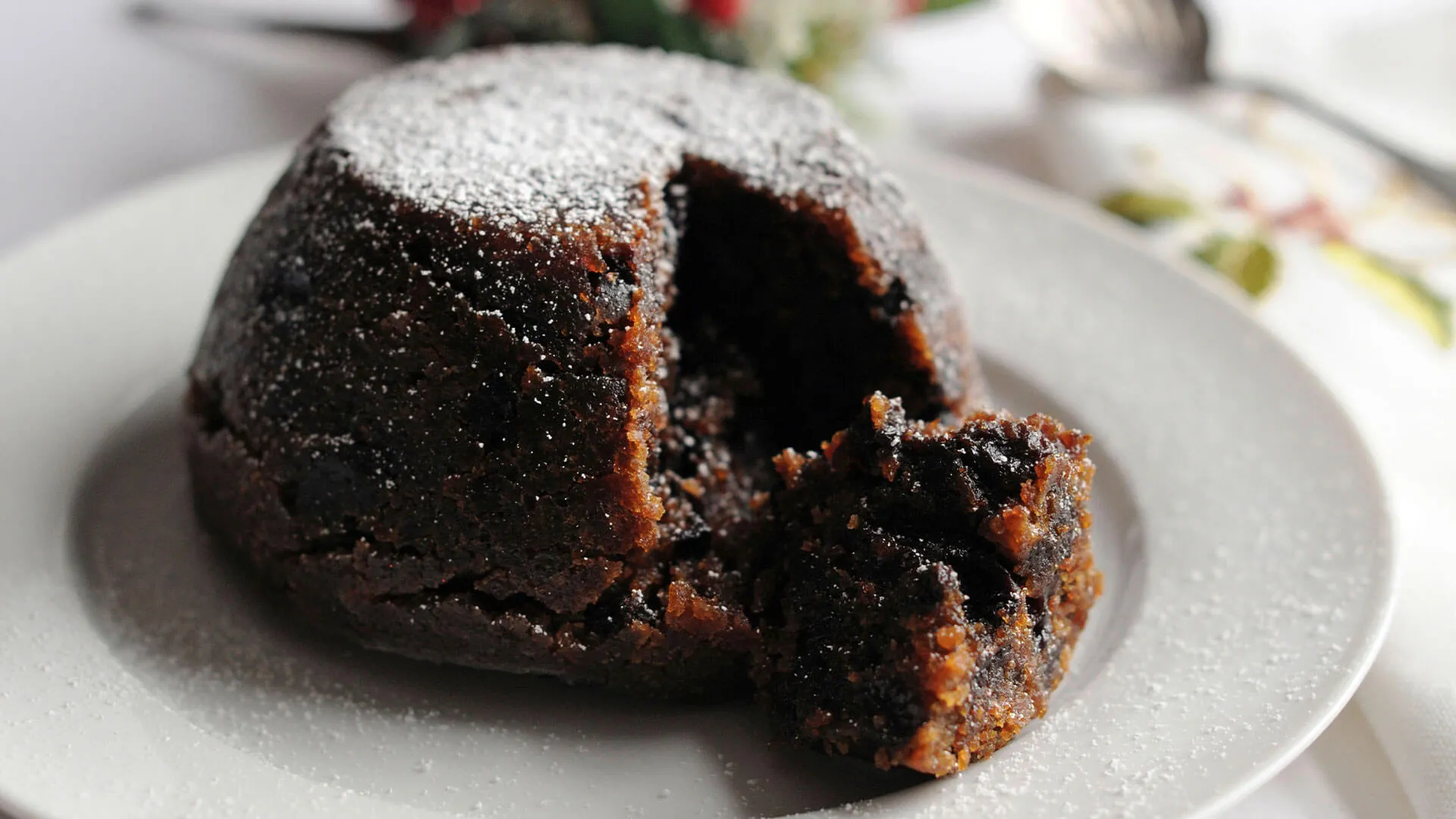
Christmas Adverts
The English count the days until Christmas commercials are unveiled—rather like Americans anticipate Super Bowl ads. There’s buzz aplenty about which brands will produce the most amusing, clever, (or saccharine) advert. Perhaps most eagerly awaited is the annual holiday campaign released by British department store chain John Lewis & Partners. The John Lewis ads premiered in 2007 but have sky-rocketed in popularity for their tear-inducing content. (Have hankies at the ready.)

The Royal Christmas Message
The monarch’s pre-recorded speech is an integral part of a British Christmas. Think dry formality, not sparkly ebullience. The message is broadcast at 3pm Christmas Day and typically offers good will and reflections on the year. It either begins or ends with the centuries-old anthem, God Save The King. The tradition started in 1932 when King George V gave a radio broadcast. (It was George VI’s story of overcoming his fear of public speaking that’s told in the 2010 movie, The King’s Speech.) Queen Elizabeth II’s Christmas remarks were those first televised in 1957.
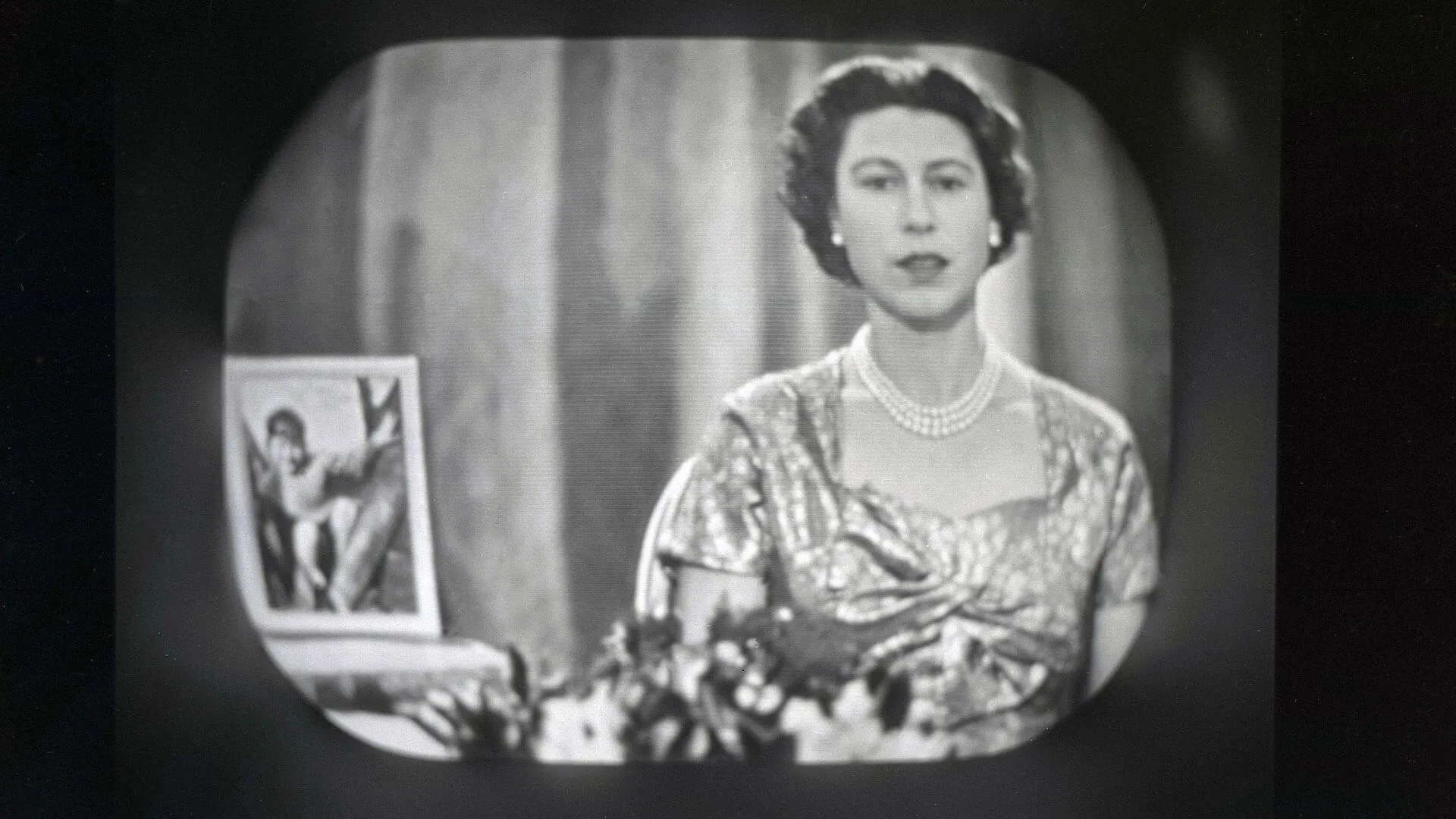
Queen Elizabeth II giving her first Christmas message on BBC television in 1957 Mince pies
The mince pie has (thankfully!) evolved from a savory 13th century dish filled with suet, actual minced meat, and chopped fruit, into a sweet, butter pastry treat made primarily with raisins, liquor, and wintery spices like cinnamon and cloves. Fun fact: Oliver Cromwell viewed eating the pies as an example of extreme gluttony and made them illegal during his 17th century reign. The modern pies are often eaten cold and normally only in December. More than 287 million are gobbled up over the holidays according to the Express (UK).
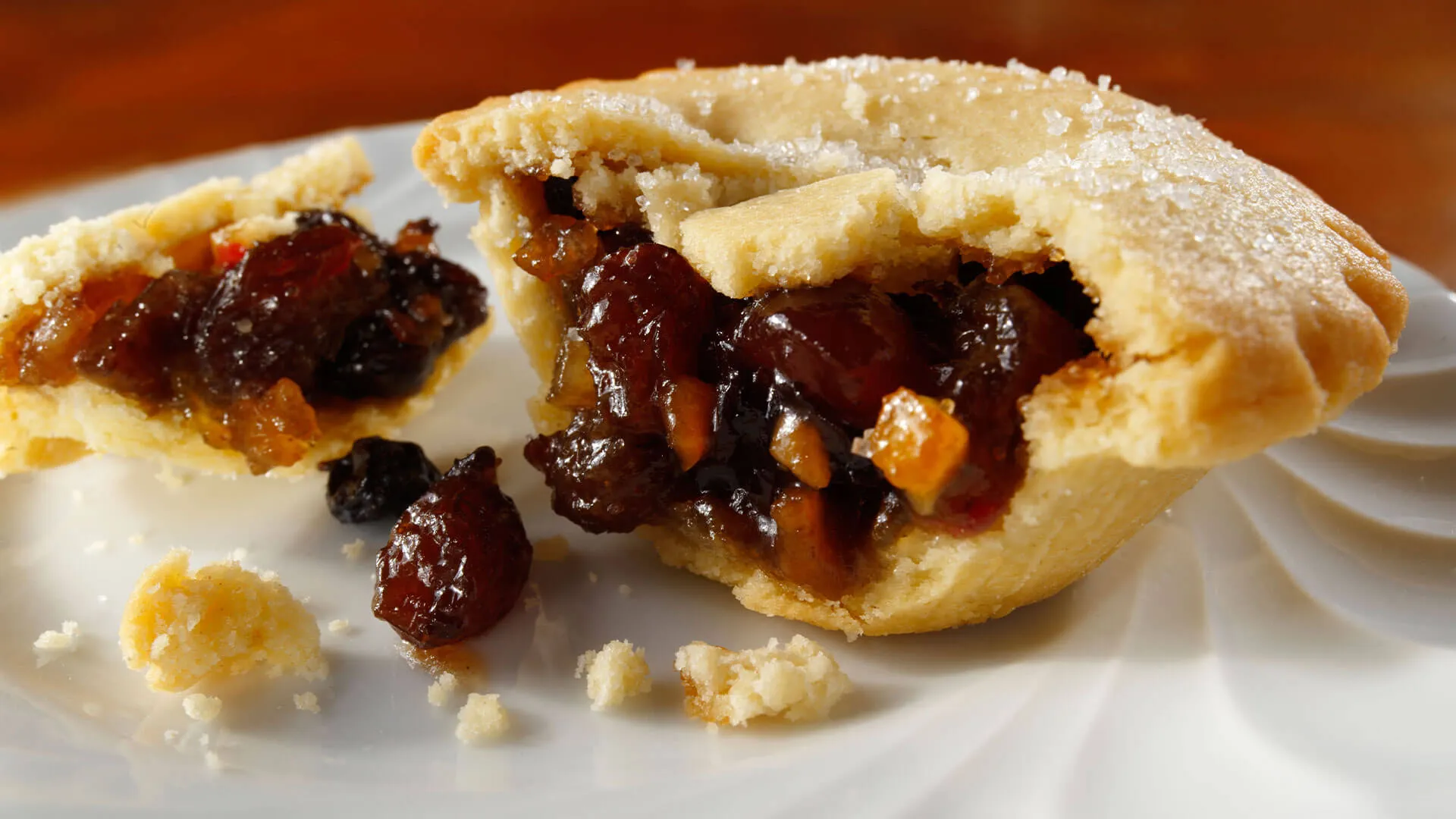
Pulling Crackers
No Christmas dinner is complete without crackers—cardboard tubes wrapped in brightly colored paper that emit a bang (or crack) when yanked apart. You and a pal pull from opposite ends; the winner is whoever’s triumphantly holding the bigger piece. Crackers typically include a groan-worthy joke to read aloud, a simple toy, and the one-size-fits-all paper crown, which you must willingly don for the evening. After the stress of organizing a holiday dinner, a hat and a truly awful joke is just what’s needed—or is it? Here’s one from The Guardian (UK): “Did you hear about the Christmas cake on display in the British Museum? It was Stollen.”

Boxing Day
Eager for more celebrating than just December 25th can contain? In England, the festivities continue with Boxing Day on December 26th. This public holiday provides a chance to indolently convalesce from the holidays or purposefully hit the post-Christmas retail sales. But throughout history, Boxing Day has also been a time to give back or help those less fortunate. Servants or merchants who worked on Christmas Day itself were given the 26th off. Employers gave staff a box of food, drink, or another gift. Merchants canvassed families they’d worked for to wish them a Happy Christmas, all the while hankering for a present or bonus.

Boxing Day distribution of Christmas presents for orphans, circa 1892


